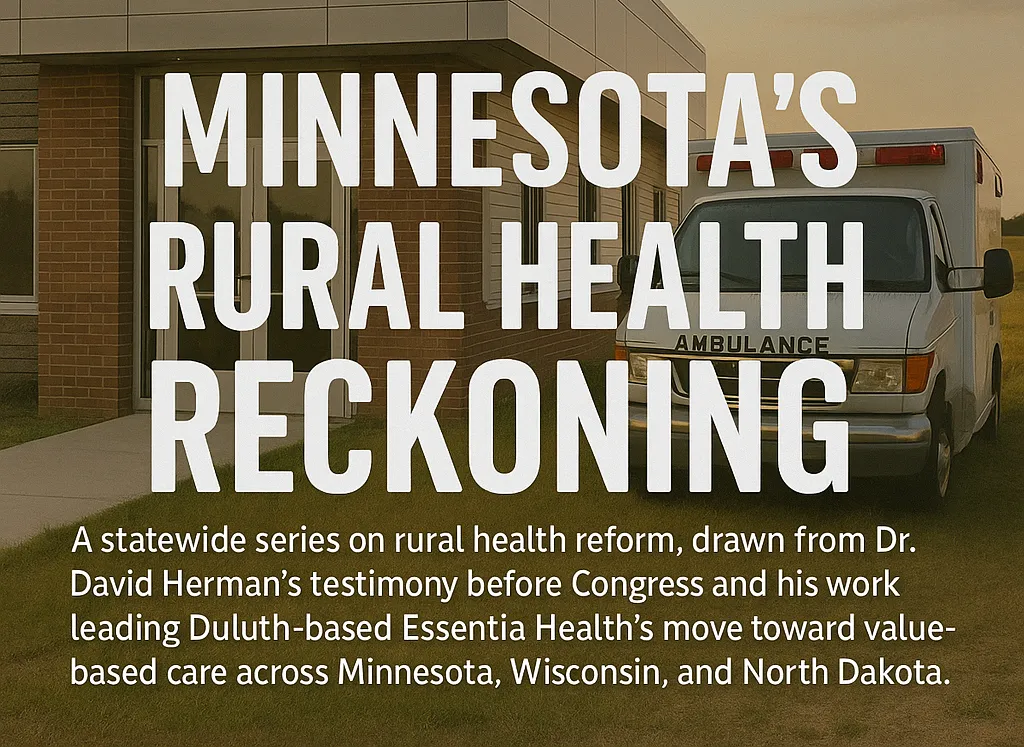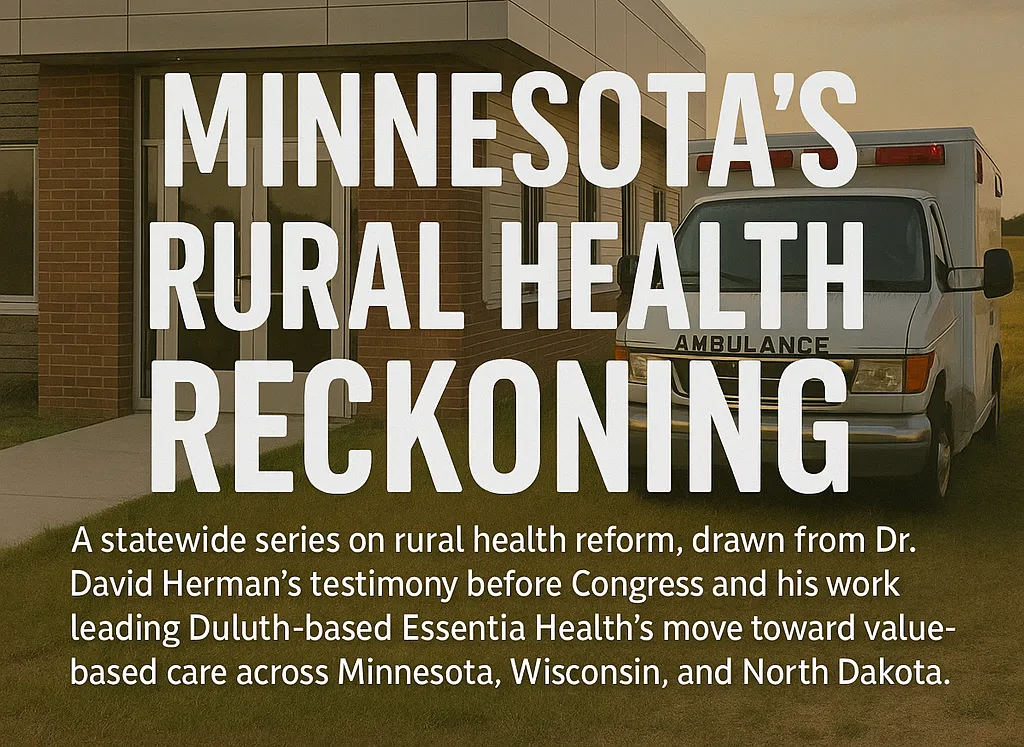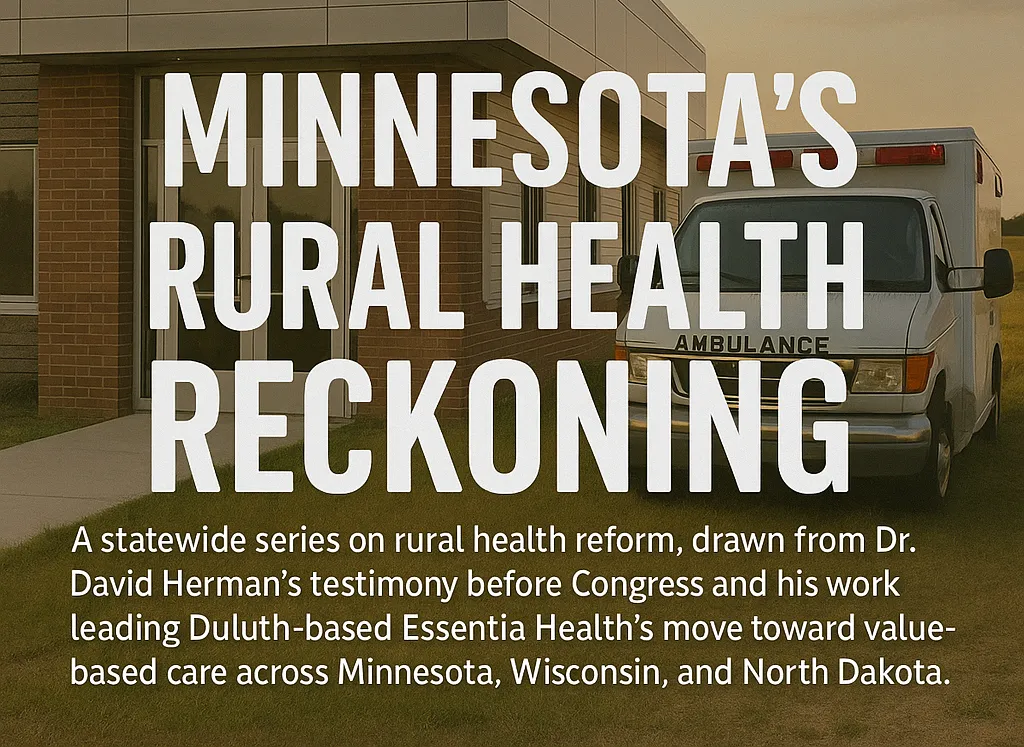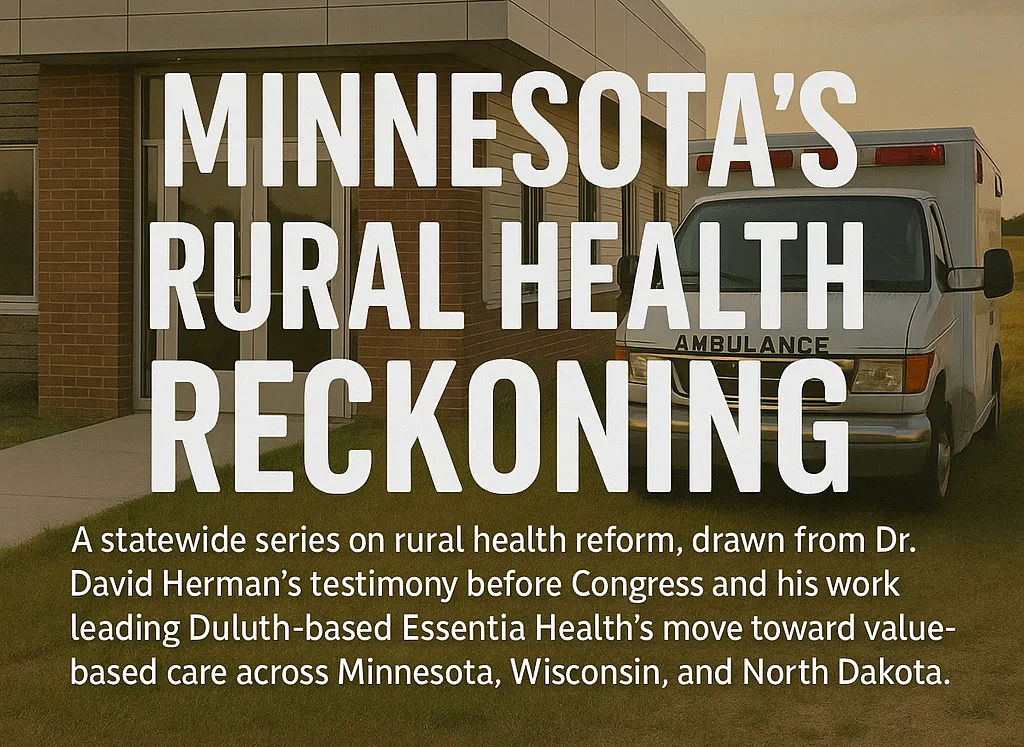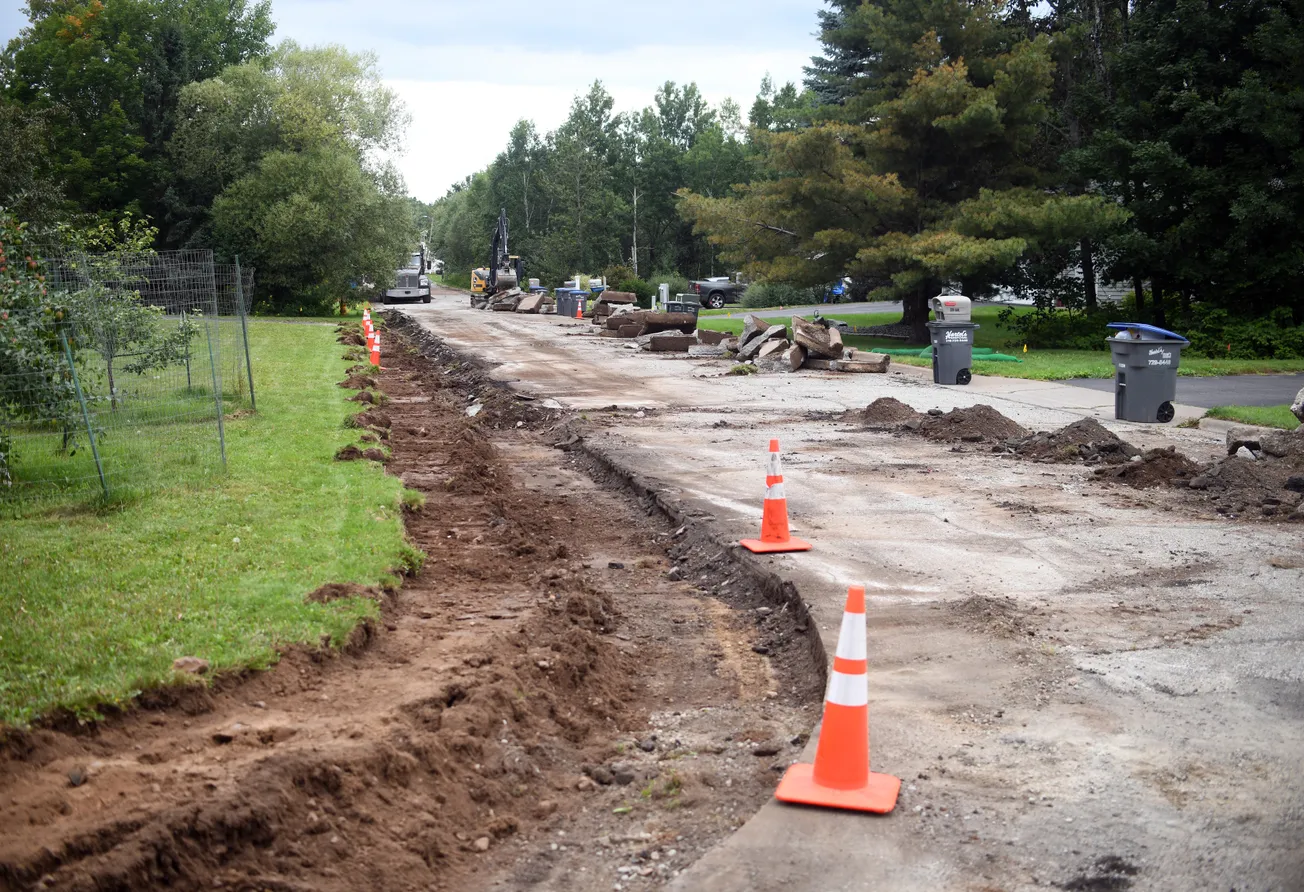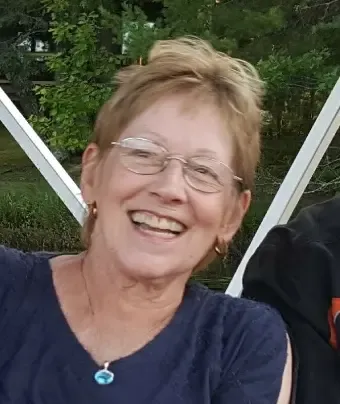Series Introduction
Beginning today, I’ll publish one column each day for 13 days — an editorial journey through the state of rural health care in Minnesota. The series is called “Minnesota’s Rural Health Reckoning.”
It looks beyond the headlines and into the exam rooms, the nurse stations, the broadband gaps and backroads where small-town medicine is quietly being rebuilt. Each installment examines one piece of the transformation — from how hospitals survive when the math stops working to how doctors, nurses, and patients are rewriting the rules of care from the inside out.
The story begins in Duluth, where Essentia Health has spent the past decade turning words like “value-based care” into something that actually lives in rural communities. But this isn’t just a health system’s story — it’s ours. What happens to medicine in Minnesota’s small towns will define who we are, how we age, and whether we can still look after one another when it matters most.
No organization sponsored this reporting. No PR firm pitched it. It’s one veteran columnist watching Minnesota’s health-care revolution unfold from the inside out — and trying to make sense of what it means for all of us.
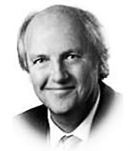
Howie's column is powered by Lyric Kitchen · Bar | eMail Howie
Rural health care isn’t collapsing. It’s mutating into something quieter, tougher, and, maybe, sustainable.
Across northern Minnesota, the country clinics and critical-access hospitals that once defined local life are being rebuilt piece by piece. The goal is no longer to fill every bed or keep every service under one roof. It’s to keep people healthy enough not to need the bed at all.
Dr. David Herman, Essentia Health’s CEO, has spent the past decade arguing that the future of rural medicine won’t be found in billing codes or bureaucracy. It will live in outcomes — in systems designed to support wellness rather than to react to illness.
“When you build the system of care to support health,” he told me recently, “health improves, costs decrease, and rural care can be sustained.”
That’s not a slogan. It’s a success plan.
In towns like Cloquet, Moose Lake, and International Falls, health-care teams are learning to measure success by what doesn’t happen — the diabetic who never reaches dialysis, the heart patient who never returns to the ER.
The coding still matters, Herman said, and clinicians must enter the right one every time. But the real story lies upstream, where prevention beats paperwork and data turns into hope.
Still, the math remains brutal. Demographics, workforce shortages, and insurance reimbursements are bending the old model to its breaking point.
And now, another blow: OB3 — Washington’s latest health-policy shift — will strip rural Minnesotans of the subsidized and tax-credit safety net that made insurance remotely affordable.
Herman warns that northern Minnesota will be hit hardest.
“The loss of those subsidies,” he said, “could undo the fragile gains we’ve made.”
On the Iron Range, that means more families skipping coverage until it’s too late. In the rural towns of western Carlton County, it means fewer prenatal visits and longer drives to deliver a baby. The same people who shovel their own driveways and fix their own roofs will now be asked to shoulder more of their own health costs.
Rural medicine has always been an act of faith — faith that community can fill the gaps left by geography. But faith alone won’t fund an ambulance, recruit a nurse, or connect a broadband line.
The next era of rural health depends on designing systems that reward results rather than codes, that measure well-being rather than billing.
That’s where the mutation becomes transformation.
It’s happening quietly, in hospital boardrooms and township halls, in Zoom calls and grain-field conversations. People like Herman are trying to rebuild a model that never fully existed — one that honors the spirit of small-town care while surviving the economics of modern medicine.
This is the first in a 13-part series exploring Minnesota’s rural health transformation — a story not of decline, but of redesign.

Minnesota’s Rural Health Reckoning — A Special Report by Howie
How Minnesota is quietly rewriting the rules of rural health care
People like Dr. David Herman are trying to rebuild a model that never fully existed — one that honors the spirit of small-town care while surviving the economics of modern medicine.
The Broadband Health Gap
Examines the rural-urban digital divide through the lens of telehealth. Nearly 20 percent of rural Minnesotans still lack reliable broadband — meaning no video visits, no remote monitoring, no equity. Puts faces to the stats: seniors, veterans, parents juggling three jobs.

The 96-Hour Rule That’s Breaking Rural Hospitals
Herman’s call to scrap the federal 96-hour limit on Critical Access Hospital stays. Show what happens when a pneumonia patient is too sick to discharge but too “long” to bill. Real-world: Ely, Moose Lake, International Falls.
“The 340B Lifeline Under Attack
Big Pharma’s assault on the 340B discount program threatens small-town hospitals. Translated: a few cents in Washington could close pharmacies in Grand Marais or Park Rapids.
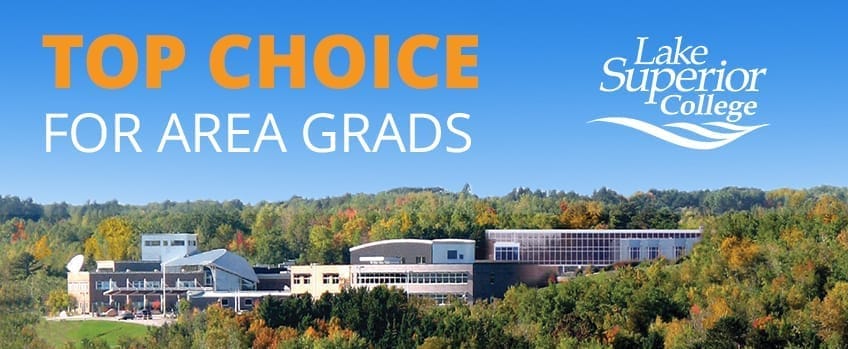
From Fee for Service to Fee for Results
A plain-spoken explainer of the national shift to value-based care — with Duluth as Exhibit A. Herman’s testimony and local clinicians.
Food, Heat, and Hope: The Social Side of Medicine
Essentia’s 144,000-patient social-needs screening exposes hidden poverty in the Northland. When 14 percent of patients report food, housing, or transport insecurity, the clinic becomes a front line against generational hardship.

The Color of Rural Health
Focus on racial disparities in northern clinics: why 22 percent of Native patients report food insecurity vs. 7 percent of whites. Brings in tribal health directors and shows how Herman’s data demands new partnerships between hospitals and reservations.
The Next Great Minnesota Export: Rural Health Innovation
Frames Duluth as a policy lab. How Essentia’s success in value-based care could serve as a model for the Dakotas, Iowa, and Wisconsin — the same way Mayo exported tele-stroke.
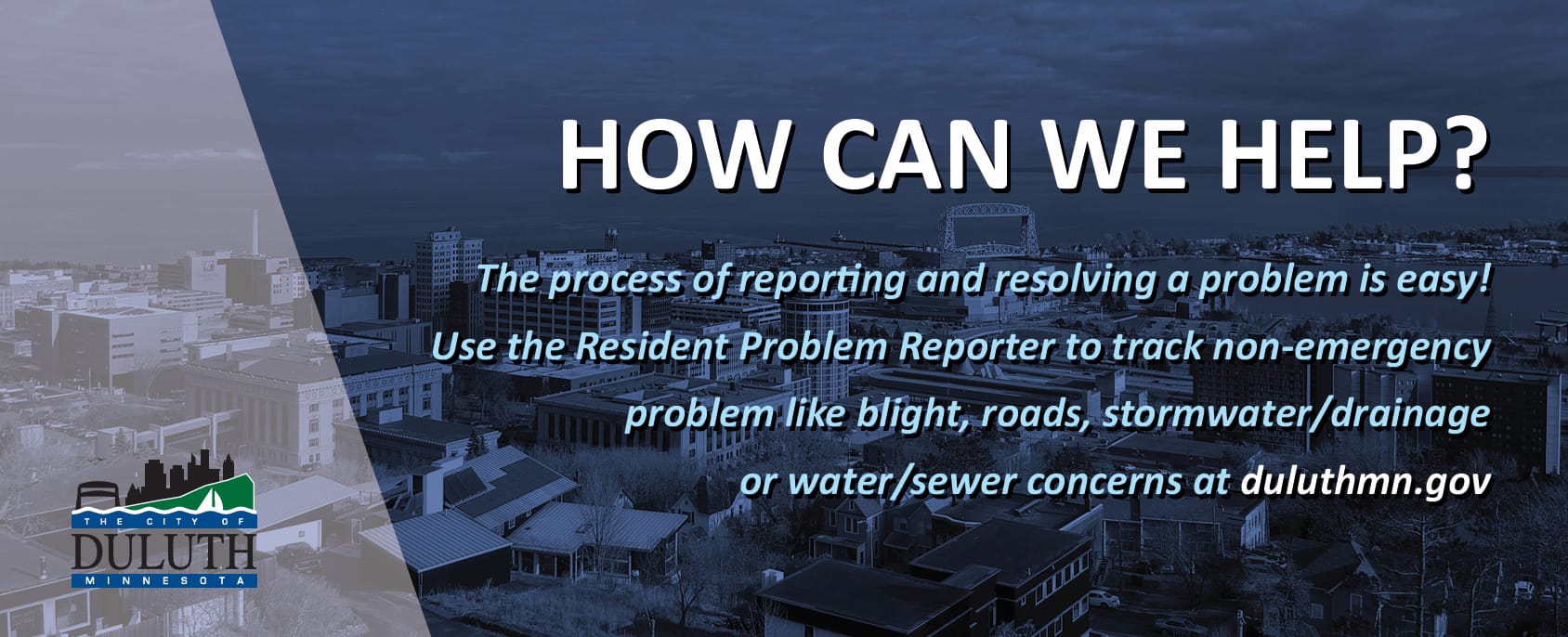
When Hospitals Become Economic Engines
Follows the dollars: rural hospitals like Deer River or Ashland are now the largest employers for 50 miles. Details Herman’s $430 million in community investment and how “healthcare capital” props up Main Street economies.
The Doctor Will Text You Now
Profiles Essentia’s embedded tech — patient portals, nurse hotlines, “Virtual Visits on Demand.” Asks whether tech can rebuild trust in small-town medicine or just widen the gap between those online and those left out.

Un-Burdening the Healers
Probes clinician burnout and the quiet hope behind Herman’s claim that value-based care restores purpose. Pairs physician interviews with workforce data — the new rural exodus of nurses, the pipeline from St. Scholastica and Itasca CC.
Policy from the North: How Duluth Is Whispering in Congress’s Ear
A reporter’s take on Herman’s Washington moment. Charts how Duluth’s CEO is lobbying for permanent telehealth, ACO bonuses, and parity between Medicare Advantage and alternative payment models — small-town voices shaping national reform.
Howie writes from Duluth, where he’s been poking the city’s sacred cows since before half the current council learned to parallel park. He runs HowieHanson.com, a one-man newsroom blogger powered by caffeine, sarcasm, and an allergy to PR spin. Part columnist, part historian, part irritant, he still believes in telling the truth—even when it makes the room uncomfortable.

